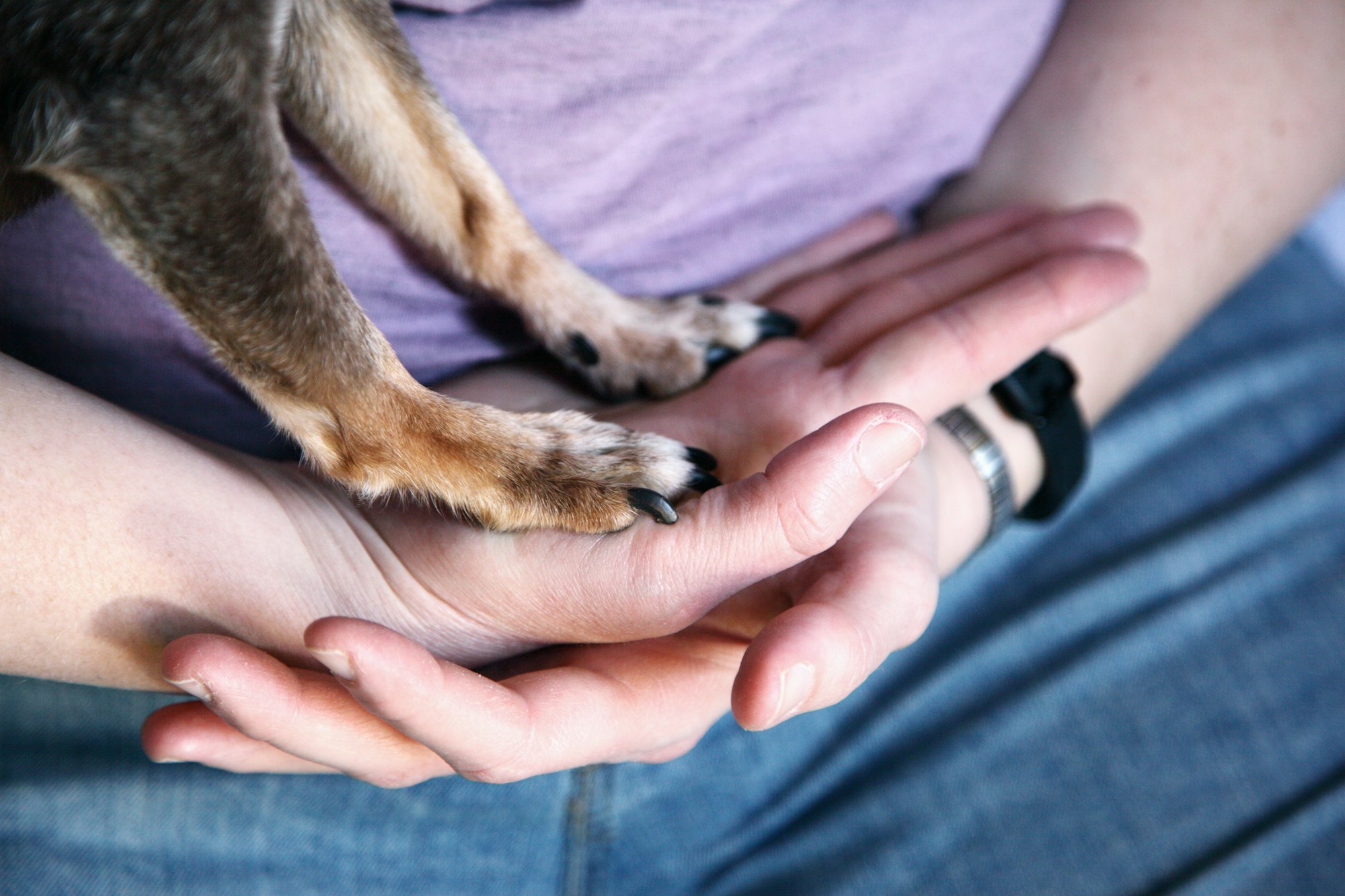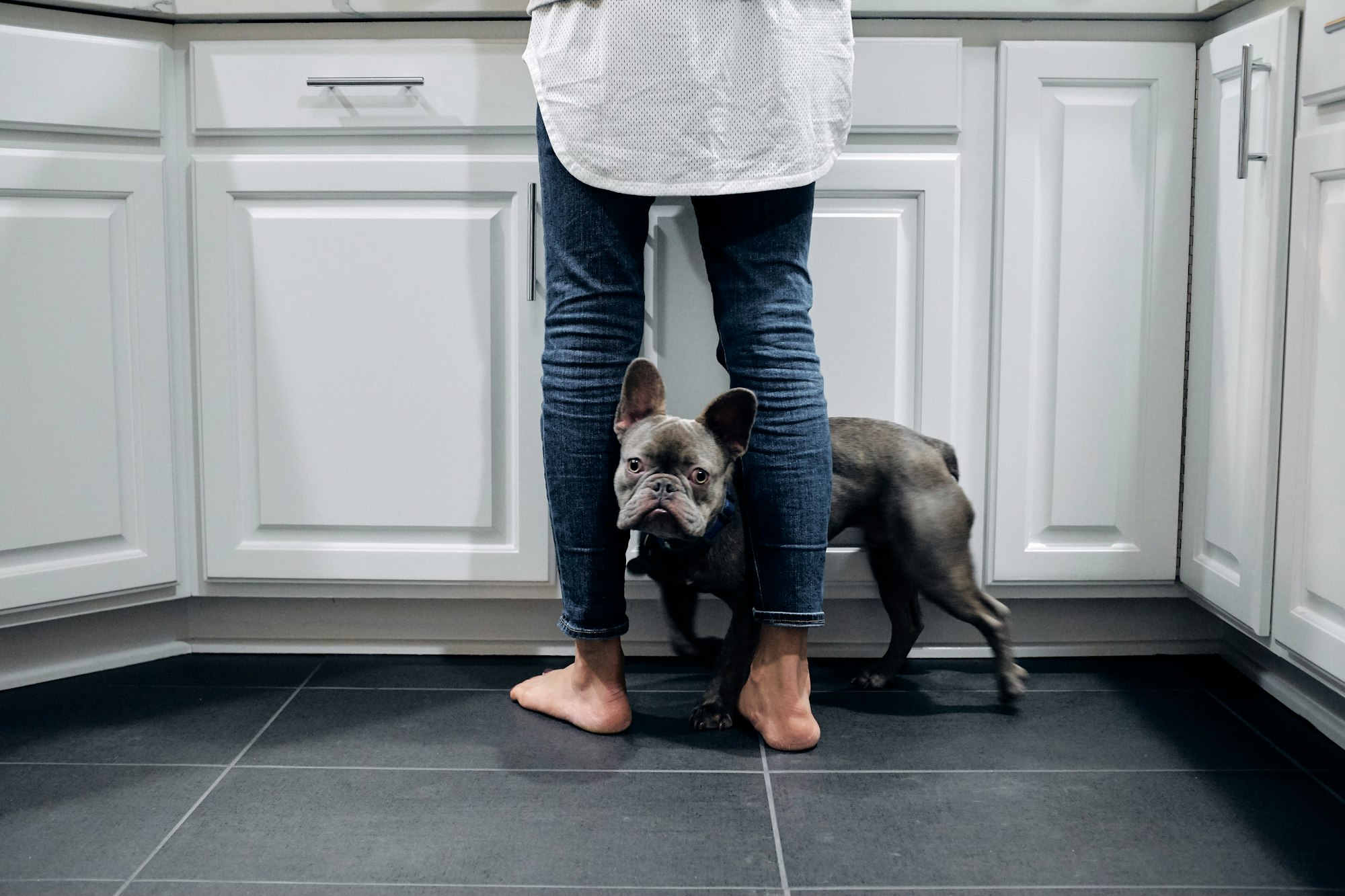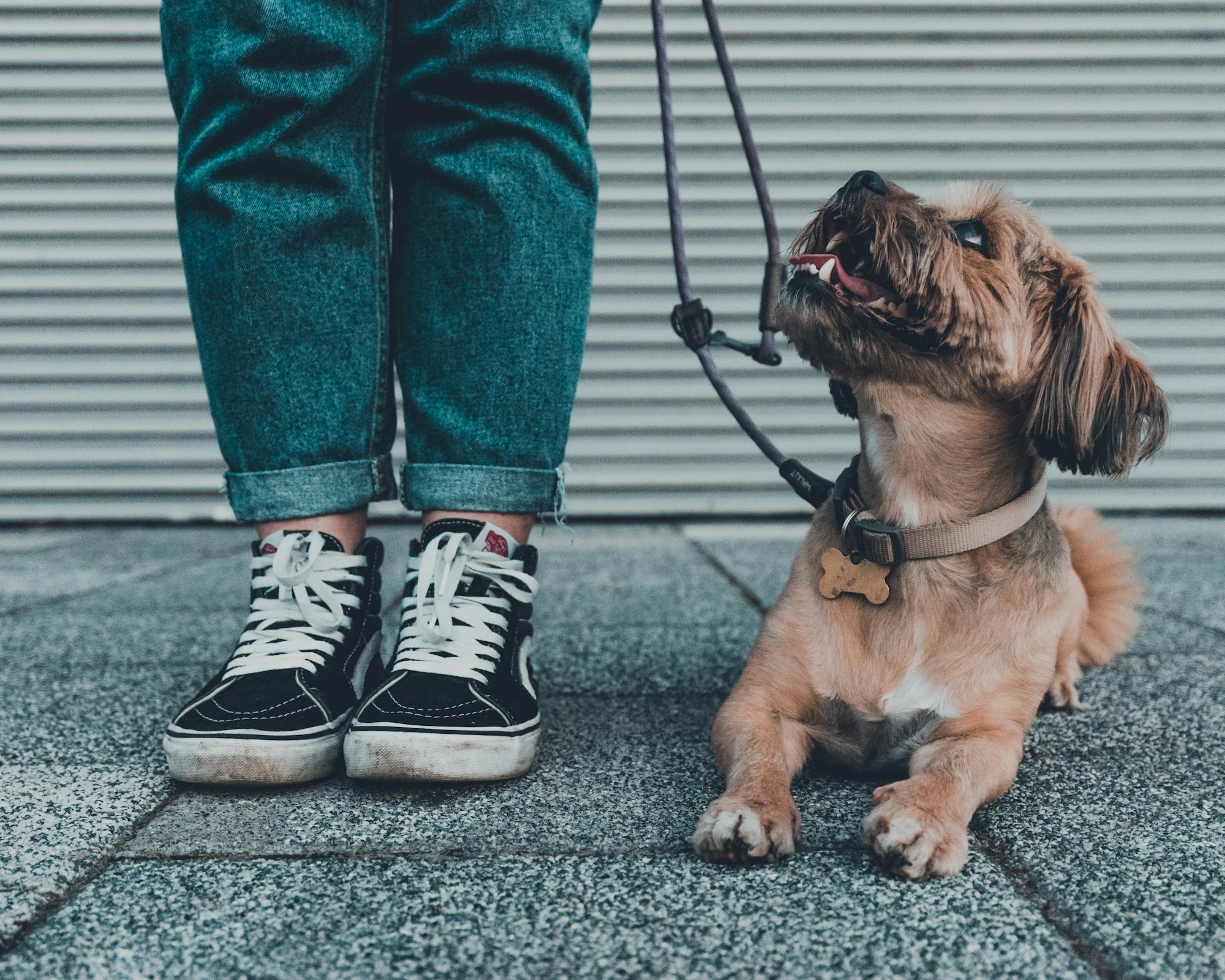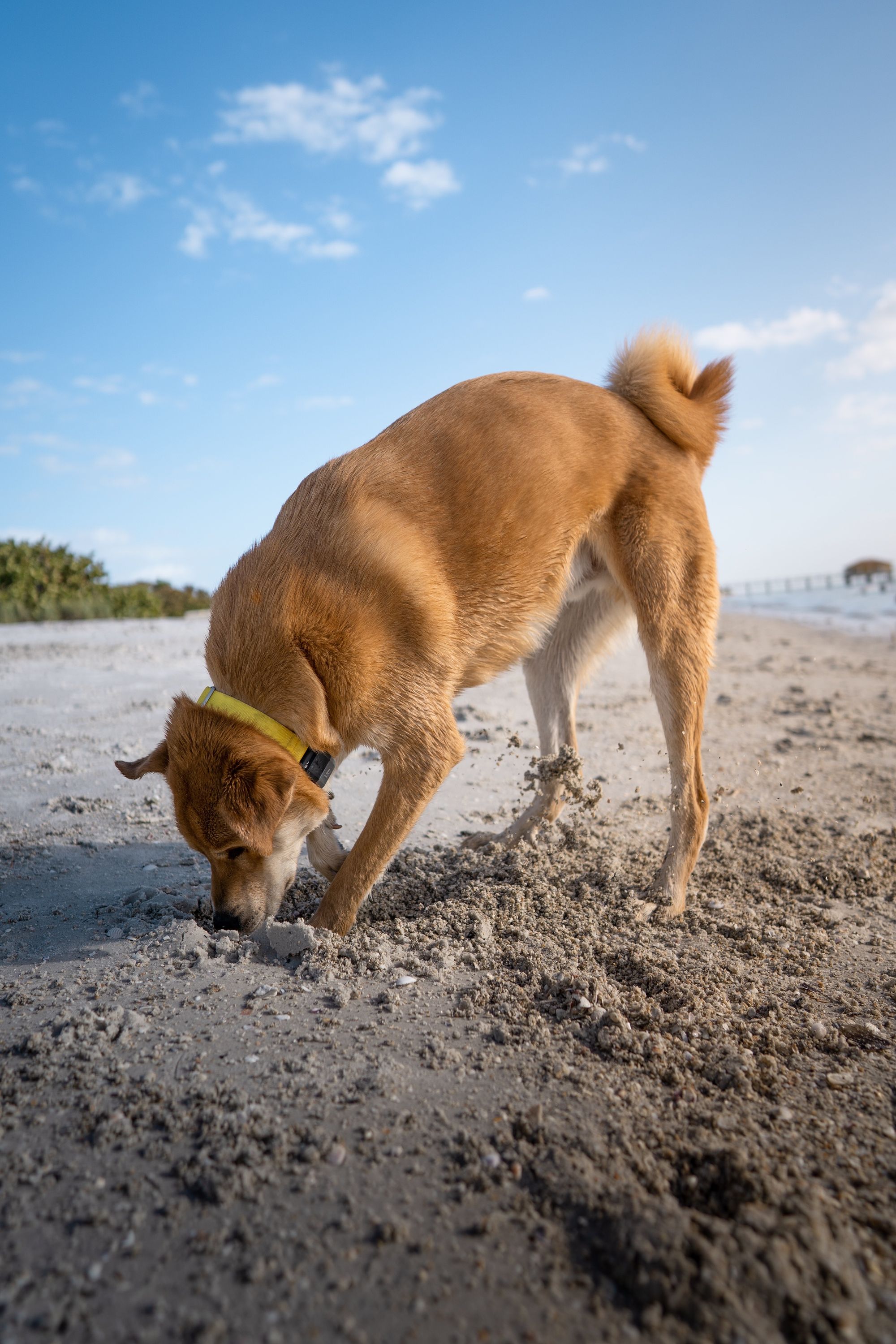When it comes to describing the bond between a dog and its owner, the term "Velcro dog" has gained popularity in recent years. But what exactly does it mean?
In simple terms, a Velcro dog refers to a canine companion that exhibits a strong attachment to its owner, often seeking constant physical closeness and companionship. These dogs have an uncanny ability to stick to their owners like Velcro, hence the term.
Defining a Velcro Dog
A Velcro dog is characterized by its intense desire to be in close proximity to its owner at all times. Whether you're sitting on the couch, working at your desk, or even using the bathroom, you can expect your Velcro dog to be right there with you. They will follow you from room to room, constantly seeking attention, and ensuring that they are a part of every moment of your day.
This behavior often manifests as your dog leaning against your leg, curling up next to you on the bed or couch, or simply resting its head on your lap. Some Velcro dogs take their attachment to the next level and may even display a reluctance to leave your side, showing signs of separation anxiety when apart.

Why Velcro Dogs are Called So
The term "Velcro dog" gained popularity due to its vivid and relatable imagery. Just like Velcro, these dogs have an incredible ability to stick to their owners, forming an unbreakable bond that seems almost inseparable. Their desire for physical contact and constant presence is so strong that it perfectly captures the idea of a dog that clings to its human companion, much like Velcro securely adheres one surface to another.
Velcro dogs often have a deep need for emotional connection and thrive on the reassurance of their owners' presence. While the term may have started as a casual nickname among dog enthusiasts, it has become widely recognized and embraced within the dog-loving community.
Understanding the definition and reasoning behind the term "Velcro dog" sets the stage for further exploration into the characteristics, advantages, and challenges of having such a loyal and attached canine companion. Let's delve deeper into the world of Velcro dogs and uncover the intricacies of their behavior.
Challenges of Velcro Dogs
One of the challenges Velcro dog owners may face is separation anxiety and dependency. Due to their intense attachment, these dogs are more susceptible to distress when separated from their owners. Leaving them alone, even for short periods, can lead to behavioral issues such as excessive barking, destructive chewing, or inappropriate elimination. It's important for owners to address separation anxiety through gradual desensitization techniques and create a secure environment that helps the dog feel safe even when alone.
Velcro dogs often display protective behavior towards their owners. They have a strong instinct to safeguard their human pack and may bark or growl when they perceive potential threats or strangers approaching. While this protective nature can be advantageous, it's crucial for owners to provide proper training and socialization to ensure their dogs' protective instincts are balanced and appropriate.
Another notable characteristic of Velcro dogs is their emotional sensitivity. They have an uncanny ability to pick up on their owners' moods and react accordingly. These empathetic canines offer comfort and support during times of stress or sadness, fostering a deep emotional bond between the dog and its owner. This emotional connection can be immensely rewarding, providing a source of solace in various life situations.
Despite their constant need for physical closeness, Velcro dogs also require mental stimulation. Engaging their minds is essential to prevent boredom and potential behavioral issues. Interactive games, puzzle toys, and training sessions can provide the mental challenge these dogs crave. Incorporating such activities into their daily routine helps ensure their well-being and fulfillment.
Understanding these characteristics is vital for dog owners considering or already living with a Velcro dog. By adapting their lifestyle to accommodate the needs of these loyal and attached companions, owners can foster a harmonious relationship and provide the care and attention required for a happy and fulfilling life together.

Tips for Living with a Velcro Dog
Living with a Velcro dog can be a delightful and rewarding experience, but it also comes with its own set of challenges. Here are some tips to help you navigate life with a Velcro dog and ensure a harmonious relationship:
1. Creating a Secure Environment: Velcro dogs thrive on a sense of security and comfort. Provide them with a designated safe space in your home where they can retreat when they feel overwhelmed or need some alone time. This can be a cozy corner with their bed or crate, stocked with toys and treats. Make sure the environment is free from potential hazards and provides a calming atmosphere.
2. Gradual Desensitization to Alone Time: Help your Velcro dog become more comfortable with being alone gradually. Start with short periods of separation, and gradually increase the duration over time. Use positive reinforcement techniques, such as rewarding them with treats or praise when they remain calm during alone time. Consider using interactive toys or puzzle feeders to keep them mentally stimulated and occupied while you're away.
3. Training and Socialization Techniques: Proper training and socialization are essential for Velcro dogs. Teach them basic obedience commands, such as "stay" and "settle," to help them understand boundaries and manage their need for constant attention. Additionally, expose them to various social situations and environments from an early age, gradually increasing the level of exposure. This helps them become more comfortable and less reliant on their owners in new surroundings.
4. Establishing a Routine: Velcro dogs thrive on predictability and structure. Establish a consistent daily routine that includes regular exercise, feeding times, play sessions, and bonding activities. A well-structured routine helps provide a sense of stability and fulfillment for your Velcro dog, reducing any anxiety or restlessness they may experience.
5. Seek Professional Guidance if Needed: If you're struggling to manage your Velcro dog's behavior or separation anxiety, don't hesitate to seek professional guidance from a certified dog trainer or behaviorist. They can provide valuable insights, personalized training plans, and additional strategies to help you and your dog navigate the challenges more effectively.
By implementing these tips and approaches, you can create a balanced and fulfilling life with your Velcro dog while strengthening the bond you share.
Myth Busting: Not All Velcro Dogs Are Alike
While the term "Velcro dog" is used to describe dogs with a strong attachment to their owners, it's important to recognize that not all Velcro dogs are the same. There are significant variations in behavior and personality among different breeds and individual dogs. Let's explore these differences to better understand the diverse world of Velcro dogs.
Individual Differences in Velcro Dog Behavior
Each dog has its own unique personality and temperament, which influences their behavior and attachment style. Some Velcro dogs may exhibit a more intense need for constant company, while others may display a milder form of attachment. Factors such as genetics, early socialization, and individual experiences can shape a dog's behavior and determine the degree of their "Velcro" tendencies.
It's also essential to consider that Velcro behavior can exist in dogs of any breed, size, or age. While certain breeds are often associated with Velcro dog behavior, it's not exclusive to them. The individual temperament and upbringing of a dog play a significant role in their attachment patterns, regardless of breed.

Recognizing Variations in Breeds and Personalities
Several breeds are commonly associated with Velcro dog behavior due to their innate loyalty and strong bonds with their owners. However, it's crucial to remember that not all dogs within these breeds will exhibit the same level of attachment. Here are a few examples:
- Labrador Retriever: Known for their friendly and outgoing nature, Labradors are often considered family-oriented and can display Velcro dog behavior. They thrive on companionship and are known to follow their owners around closely, eager to please and be part of the family activities.
- Golden Retriever: Similarly, Golden Retrievers are known for their affectionate and gentle demeanor. They form strong bonds with their owners and often exhibit Velcro-like behavior, seeking constant physical closeness and attention.
- Cavalier King Charles Spaniel: These small and charming dogs are often referred to as "love sponges" due to their inherent desire to be with their owners. They can display Velcro dog behavior, seeking comfort and cuddles from their loved ones.
- German Shepherd: Known for their loyalty and protective nature, German Shepherds can develop a strong attachment to their owners. While their protective instincts may amplify their Velcro-like behavior, individual personalities and training play a significant role in their attachment style.
It's crucial to remember that individual differences in Velcro dog behavior go beyond breed stereotypes. Some dogs may exhibit a more independent nature within typically Velcro breeds, while others may display a stronger attachment in breeds not typically associated with Velcro behavior. The key is to recognize and respect the unique personality of each dog and tailor your interactions and training to their specific needs.
By acknowledging and appreciating the variations in Velcro dog behavior among different breeds and individual personalities, we can better understand and meet the needs of these loyal and loving companions.
Conclusion
Living with a Velcro dog can be a truly rewarding experience. By embracing their unique needs and tailoring your lifestyle accordingly, you can strengthen the bond with your canine companion.
Recognize the intense attachment and constant need for companionship that Velcro dogs possess. Rather than viewing it as a burden, appreciate the deep loyalty and unwavering devotion they bring to your life.
Create a secure environment, provide mental and physical stimulation, and establish a consistent routine to meet their needs. Address separation anxiety through gradual desensitization techniques and seek professional guidance if needed.
Remember that individual differences exist among Velcro dogs, influenced by breed and personality. Be attentive to your dog's unique temperament and adapt your interactions accordingly.
Living with a Velcro dog requires a commitment to meeting their emotional and social needs. Embrace the experience and cherish the moments of unwavering loyalty and affection that these remarkable dogs bring into your life.
For more helpful articles about pet-parenting tips, check out the Off Leash blog at TryFi.com.
Want to know more about TryFi.com? The Fi Dog Collar is a GPS tracking collar that not only keeps track of your dog’s location, activity levels, and sleep patterns, but it also alerts you if your dog escapes your backyard. This is the fastest way to find your dog after an escape. Try the Fi Dog Collar today!

